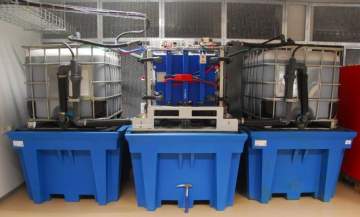
Introduction:
Unlike the fundamental limits of electrochemical power sources, which are based on thermodynamic data and are well understood, prediction of the viability of mass production of a battery with particular chemistry requires sufficient supplies of chemical and raw materials that may not be known with high certainty. While data on available minerals exist, they have a large uncertainty error bar, and the availability is also driven by demands. If the demand for a particular material increase, the willingness to pay a premium for extraction may bring to market resources previously thought non-viable (Fletcher, 2011; Takaya et al., 2018). For example, lithium metal availability and its perceived shortage or abundance have been a study of a number comparisons, for example, (Gruber et al., 2011) and current news economy considerations (Patterson and Gold, 2018). In a rare case, as happened with mercury (Vanýsek, 2015), the demand may also decrease. Here we will look at a type of a battery that relies on utilising reduction and oxidation of metal salts, for example, vanadium. Hence, its commercial success depends on the ability to produce enough vanadium salts, presumably by tapping the materials available in the Earth crust.
The energy of chemical bonds is a very advantageous way of storing energy. Combustion is historically (and even prehistorically) the most significant way of releasing energy in the form of heat. However, thermal energy is less advantageous for energy supply than electrical energy. For this reason, it would be better to convert the chemical energy of bonds directly into electrical energy. This is possible in electrochemical sources, both in the primary cells, that are discarded after use, and secondary ones, which can be recharged after use, and in particular in fuel cells, which are electrochemical sources whose own active substance is not the part of the conversion cell, but is stored in external containers. The active substances and their choice in the flow cells are significantly and actively influenced by the raw materials used as the basis of the redox pairs.
With increasing efforts to use renewable sources as a source of energy, there is a new practical complication, especially for solar cells and wind generators, namely that these energy sources are working intermittently and to some extent unpredictably (Tauš et al., 2015). It is therefore preferable, on a global scale, that electricity should be stored at times when it is overproduced and then made available at times when the demands for energy is higher than the supply from these sources. So far the most efficient storage systems are mechanical, of which the most advantageous are both pumping hydroelectric power plants and compressed air storage (Vanýsek et al., 2015). However, these systems are only effective if they are designed for high performance, requiring substantial initial investment, and physically cannot be placed everywhere. On the other hand, retention of energy in electrochemical cells of the second type (rechargeable batteries) is an obvious choice, and from the point of view of known technologies, it is quite possibly even the most practical method. The task of science and research is to find batteries that will be reliable and generally financially and practically available with good technical parameters. This article discusses one type of an electric accumulator, the so-called redox flow battery.
Click on the above icon for the FULL PDF version
